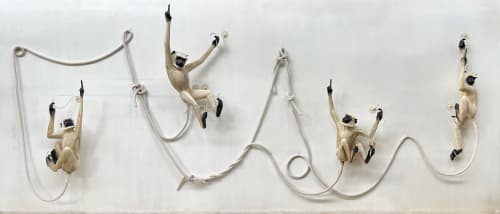“I was intrigued by the relationship between time and the senses – the delays in how memories are formed and travel, the residues that make up the story of the self. I imagined the artists’ sensorial stimulations in the creation of each of these works, and the power of subliminal influence on the aesthetics of form and anti-form. What is involved in the creation and communication of a mood?” says Anand.
A Lick of Night in the Morning is a compelling group exhibition featuring prominent contemporary artists Anju Dodiya, Atul Dodiya, Balkrishna Doshi, Gieve Patel, N.S. Harsha, Sudhir Patwardhan and Ranbir Kaleka titled A Lick of Night in the Morning, curated by writer and curator Dipti Anand on display at our contemporary gallery from 27 September to 11 November 2022.
The exhibition considers how the fleeting existence of time has occupied the imaginations across cultures and fuelled obsessions with relevancy and practice – how to mark it, tame it, overpower it, and outlive it. Even as the intellect reigns in parsing and piecing together our daily cognitions, only the sensory possession of the world can cause delight in us – and suddenly a fleeting existence of time becomes populated by a flurry of impressions, which when secured together give us a fabric of selfhood. Moreover, it is not beauty itself but our response to beauty – its equal presence and absence – that commands our sensitivity, which is a perspective inherent in an artist’s relativist approach to material, subject and form. In itself, a state of overwhelm is chaotic sublime, a kind of sensory overload where the intensification of experience, through things of “beauty”, must somehow be managed. As the debate ensues, we may pause for a moment to consider: within the framework of twenty-first century aesthetics, how might we read a curation of artworks that prompt sensorial interactions as their content?
The show features particular contributions built at the helm of understanding that the senses are a reliable measure of experience, and that in the highest case we can make for art, we can argue that the experience of the work is its sought-after meaning. The angling questions explored here have less to do with the artwork and more to do with the artist’s primordial indulgences and retaliations. What sensory elements are prioritized in a traditional sight-based viewing of art, and what instincts of disembodiment, or stepping outside the flow of time, are beseeched?
